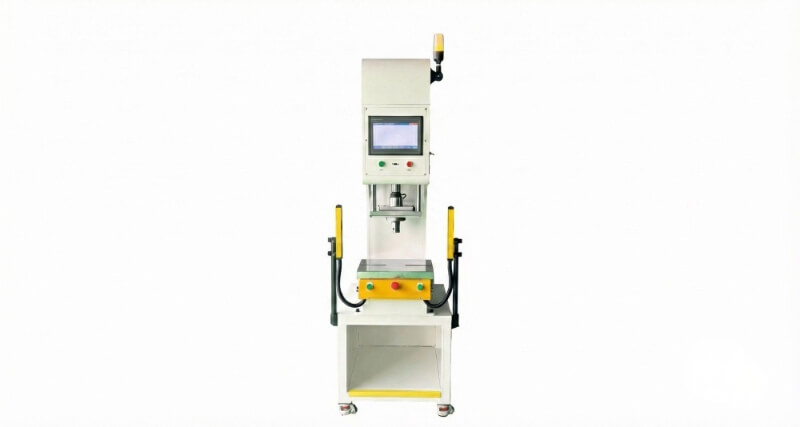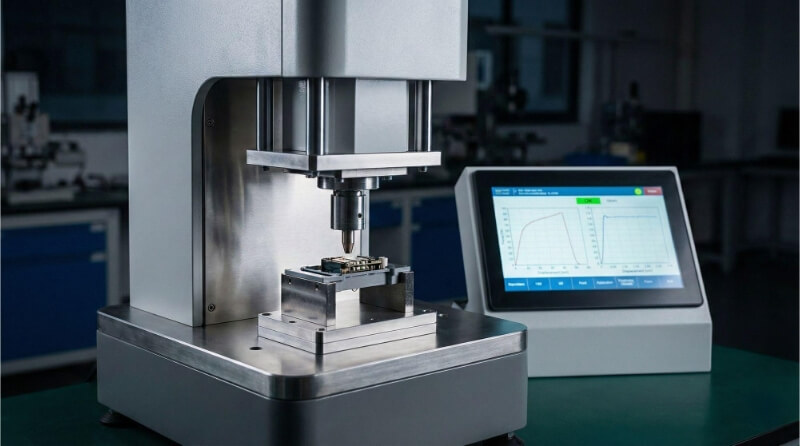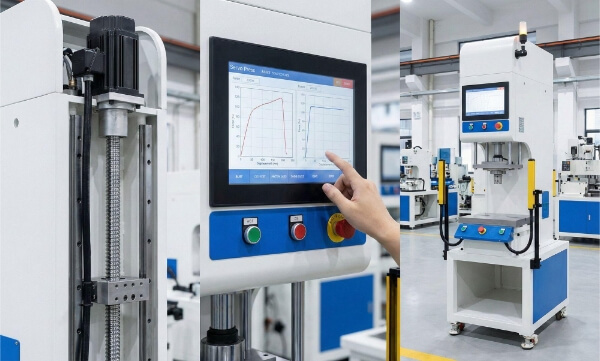Are your threaded holes stripping out, or are your taps breaking too often? That’s a sign your tap type might not match your material or setup. Many professionals overlook this step, assuming all taps function similarly. Let’s fix that. In this guide, we’ll walk you through tap types and help you choose the right one.
Taps may look similar, but slight design differences affect their performance. Choosing the right one helps you cut faster and reduce tool wear. Let’s look closer.
What Is a Tap in Threading?
A tap is a tool used to cut threads inside a hole. It works by removing material and shaping the internal wall so a screw or bolt can fit. Taps come in many shapes and sizes. Some are made for hand use, while others are used on machines. They are designed to match specific thread sizes and standards, like metric or UNC.
Taps have cutting edges, called flutes, that allow chips to escape. The number of flutes, the tip shape, and the thread angle all impact how effectively the tap works with various materials. Taps are used in multiple industries, including automotive and electronics, to create strong threaded connections.
Components of Taps
Choosing the right tap helps to understand its parts. Each part plays a role in how the tap cuts threads and clears chips.
Body
The body is the central working part of the tap. It contains the threads and cutting edges. The body determines the tap’s thread size and cutting performance. Most of the cutting happens in this section.
Shank
The shank is the straight part above the body. It connects the tap to a tool holder or wrench. It doesn’t do any cutting. Its size must match the tool holder for a secure fit.
Tang
The tang is a small, flat, or square end at the top of the shank. It’s often used in hand tapping to grip the tool. Some machine taps may not have a tang. The tang allows manual turning when using a tap wrench.
Flutes
Flutes are the grooves cut along the body. They create the cutting edges and help chips escape. Most taps have two to four flutes. More flutes mean smoother finishes but less space for chip flow. Fewer flutes allow better chip removal but may reduce finish quality.
Land
The land is the raised area between flutes. It supports the cutting edge and guides the tap in the hole. It keeps the tap centered and steady during threading.
Heel
The heel is the back part of the land. It doesn’t cut but helps guide the tap. It controls the amount of material cut with each turn.
Cutting Face
The cutting face is the part of the flute that cuts the thread. It’s shaped to remove material as the tap rotates. A sharp-cutting face makes clean threads and reduces cutting force. The design varies depending on the material and type of tap.
Types of Taps
Each type of tap is designed for a specific purpose. Some are better suited for manual use, while others are designed for use with machines or particular threads.
Hand Taps
Hand taps are the most common type of tap. They are used with a tap wrench for manual threading. They usually come in sets of three: taper, plug, and bottoming. These taps are slower, but they provide reasonable control. They are best for small jobs or low-volume work.
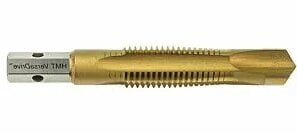
Taper Tap
A taper tap has a long, gentle cutting lead. The first 7 to 10 threads are gradually tapered. This makes it easy to start the thread straight. It removes less material with each turn. It’s usually the first tap used when threading by hand.
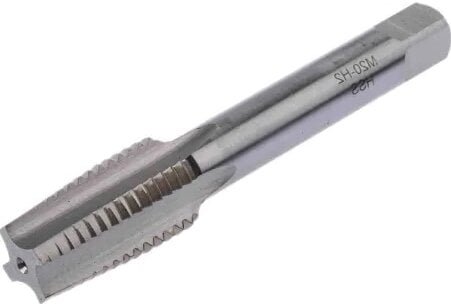
Plug Tap
A plug tap has a medium taper. It has 3 to 5 threads that are cut before the complete thread profile is formed. It’s the most commonly used tap in general work. It balances cutting force and chip control well.

Bottoming Tap
A bottoming tap has only 1 or 2 tapered threads at the tip. The rest are full-size threads. It’s used to cut threads to the bottom of a blind hole. It is usually used after a taper or plug tap has started the thread.
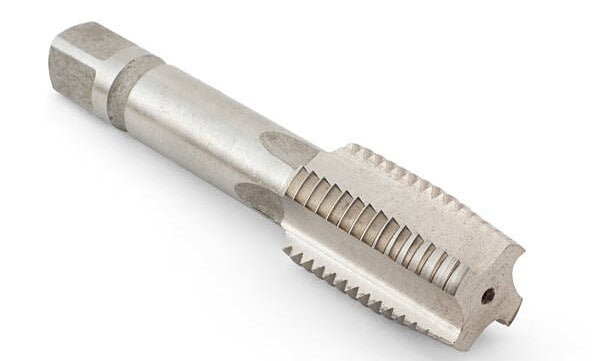
Master Tap
A master tap is used for checking and calibrating thread gauges and measuring tools. It is made with very high precision. It’s not used for cutting production threads but for quality control.
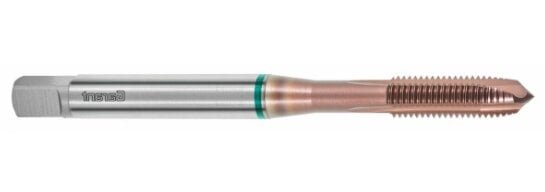
Gas Tap
A gas tap is designed for threading pipes and fittings used in gas systems. It usually follows a different thread standard, like BSP or NPT. These taps are used where a tight seal is needed to prevent leaks.
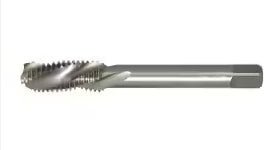
Machine Tap
Machine taps are made for use in tapping machines or CNC equipment. They are stronger than hand taps and can cut threads faster. They come in spiral point or spiral flute styles. These taps are suitable for high-volume production.
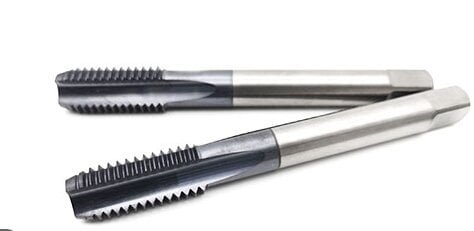
Machine Screw Tap
A machine screw tap is a slight tap made for threading holes for machine screws. These are used in precision work, like electronics or small mechanical parts. They follow standard screw thread sizes. They are often used in softer metals or plastics.
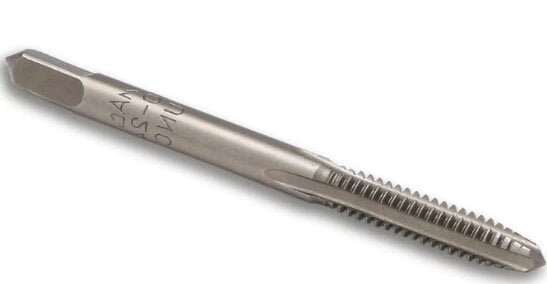
Extension Tap
An extension tap has a longer shank than a standard tap. It helps reach deep or hard-to-access holes. The cutting part is the same as a regular tap. These are useful for parts with limited clearance or deep cavities.

Bend Shank Tap
A bend shank tap has a curved or offset shank. It’s used in exceptional cases where straight taps can’t fit or turn. It’s not common but can be custom-made for specific parts or machines. These taps solve clearance problems in complex assemblies.

Stay Bolt Tap
Stay bolt taps are used in boiler and pressure vessel work. They are designed to cut special threads used in stay bolts. These taps are typically long and strong, designed to handle tough materials and drill deeper holes.
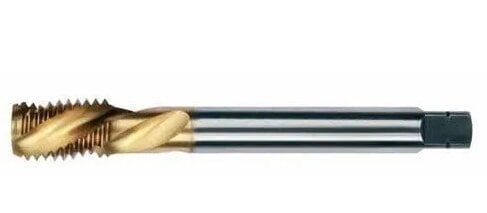
Spiral Fluted Tap
A spiral-fluted tap has twisted flutes that carry chips upward and out of the hole. It works well in blind holes. It keeps chips from clogging at the bottom. It also reduces the risk of tap breakage. This type is often used in soft metals, such as aluminum or copper.
Fluteless Tap
A fluteless tap is also called a roll tap or forming tap. It doesn’t cut metal. Instead, it forms threads by pushing the material outward. It creates stronger threads with no chips. These taps are best suited for use with ductile materials, such as aluminum, brass, or mild steel. They are often used in high-volume production.
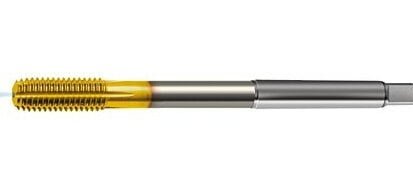
Tap Material Types
The material of a tap affects its cutting performance, tool life, and cost. Choosing the right tap material helps reduce breakage and improve thread quality.
High-Speed Steel (HSS) Taps
HSS taps are the most widely used. They offer a good mix of hardness, toughness, and cost. They work well on various materials, including steel, aluminum, and brass. HSS taps are flexible and resist breaking under regular use. They are a good choice for general-purpose tapping.
Cobalt Steel Taps
Cobalt steel taps are made by adding cobalt to HSS. This makes them more complicated and more heat-resistant. They are ideal for harder materials, such as stainless steel or titanium. Cobalt taps last longer under harsh cutting conditions. They resist wearing better than standard HSS taps.
Carbide Taps
Carbide taps are extremely hard and wear-resistant. They hold their cutting edge longer than HSS or cobalt. They are used in high-volume production or with abrasive materials. However, they are more brittle and can break under side force or misalignment. Use carbide taps in rigid setups, such as CNC machines.
Coated Taps (TiN, TiCN, TiAlN)
Coated taps have a surface layer that boosts performance.
- TiN (Titanium Nitride) adds hardness and lowers friction.
- TiCN (Titanium Carbonitride) adds toughness and better wear resistance.
- TiAlN (Titanium Aluminum Nitride) provides high heat resistance for dry or high-speed tapping applications.
Tap Sizes and Thread Pitch
Choosing the right tap size and pitch is crucial for creating strong, reliable threads. Size markings and thread details tell you what the tap can do.
Understanding Tap Size Markings
Tap sizes are usually marked on the shank. These markings include the thread diameter and the thread standard. Common markings look like M6 x 1.0 for metric or 1/4-20 UNC for inch sizes.
- In metric taps, the first number is the thread diameter in millimeters. The second is the pitch—the distance between threads.
- In inch taps, the first number is the nominal size. The second number shows threads per inch (TPI).
Always match the tap size to the hole you’re threading and the fastener you’ll use.
Thread Pitch vs. Thread Count
Thread pitch is the space between threads, measured in millimeters (for metric taps). Thread count is the number of threads per inch (TPI) used in inch-based systems.
- A finer pitch or higher TPI means more threads, better grip, and more holding power.
- A coarser pitch or lower TPI results in faster cutting and greater strength in soft materials.
Use fine threads for precision. Use coarse threads for faster tapping and better chip clearance.
Choosing the Right Size for Your Application
Match the tap size to the hole and the fastener. Check your design specs or use a tap chart to find the correct size.
- For through-holes, use a standard tap with a slightly smaller hole than the thread size.
- For blind holes, check both depth and pitch.
Always use the correct drill size before tapping. Undersized holes can break the tap. Oversized holes can create weak threads.
| Tap size | Major Diameter (mm) | mm per thread | Drill Size (mm) |
|---|---|---|---|
| M1.6 * 0.35 | 1.6mm | 0.35 | 1.25mm |
| M2 * 0.4 | 2mm | 0.4 | 1.6mm |
| M2.5 * 0.45 | 2.5mm | 0.45 | 2.05mm |
| M3 * 0.5 | 3mm | 0.5 | 2.5mm |
| M3.5 * 0.6 | 3.5mm | 0.6 | 2.9mm |
| M4 * 0.7 | 4mm | 0.7 | 3.3mm |
| M5 * 0.8 | 5mm | 0.8 | 4.2mm |
| M6 * 1 | 6mm | 1 | 5mm |
| M8 * 1.25 | 8mm | 1.25 | 6.8mm |
| M8 * 1 | 8mm | 1 | 7mm |
| M10 * 1.5 | 10mm | 1.5 | 8.5mm |
| M10 * 1.25 | 10mm | 1.25 | 8.8mm |
| M12 * 1.75 | 12mm | 1.75 | 10.2mm |
| M12 * 1.25 | 12mm | 1.25 | 10.8mm |
| M14 * 2 | 14mm | 2 | 12mm |
| M14 * 1.5 | 14mm | 1.5 | 12.5mm |
| M16 * 2 | 16mm | 2 | 14mm |
| M16 * 1.5 | 16mm | 1.5 | 14.5mm |
| M18 * 2.5 | 18mm | 2.5 | 15.5mm |
| M18 * 1.5 | 18mm | 1.5 | 16.5mm |
| M20 * 2.5 | 20mm | 2.5 | 17.5mm |
| M20 * 1.5 | 20mm | 1.5 | 18.5mm |
How Do You Skillfully Use a Tap to Thread?
Using a tap the right way reduces the risk of breakage and gives you cleaner threads. Whether by hand or machine, the steps are mostly the same.
Step 1: Drill the Correct Hole Size
Start with the right hole. Use a drill bit matched to the tap size and thread pitch. A hole that’s too small can snap the tap. One that’s too large won’t hold the threads. You can use a tap drill chart to find the correct size.
Step 2: Apply Lubrication
Use tapping fluid or cutting oil. It reduces friction and heat. It helps the tap last longer and makes chip removal easier. Use more fluid on harder metals, such as stainless steel.
Step 3: Align the Tap Straight
Hold the tap straight to the hole. Use a guide or fixture if needed. If it’s tilted, the threads will be uneven, and the tap may break.
Step 4: Turn the Tap Slowly
Turn the tap clockwise to cut. After every complete turn, reverse it about a half-turn. This breaks the chips and clears the flutes. Keep the pressure even. Please don’t force it.
Step 5: Clear Chips Often
Back the tap out every few turns to clean out chips. Wipe them off and add more fluid if needed. This helps prevent clogging and jamming.
Step 6: Finish and Inspect
Once done, back the tap out slowly. Clean the threads and check for burrs or rough spots. Make sure the screw fits well. A proper thread should be clean, tight, and smooth.
Choose the Right Taps for Your Project
Picking the right tap depends on the material, hole type, and machine setup. Each factor affects how the tap performs and its lifespan.
Type of Workpiece
The material of the workpiece affects tap choice the most.
- Aluminum or Brass: Use HSS or fluteless taps. Spiral fluted taps work well in blind holes.
- Mild Steel: HSS or cobalt taps work well. Spiral point taps are suitable for through holes.
- Stainless Steel or Titanium: Choose cobalt or carbide taps. Use a coated spiral flute tap for blind holes to avoid chip jamming.
- Plastics: Use sharp HSS taps. Avoid coated or forming taps.
Tap Material
Use basic HSS for soft metals. For harder materials, go with cobalt or carbide. Choose coated taps if you want better heat resistance or are running long production cycles.
- HSS: For general work
- Cobalt: For tougher materials
- Carbide: For high-speed and high-volume setups
- Coated: For added wear and heat resistance
Types of Holes
Match the tap style to the hole type.
- Through-Hole: Use spiral points or plug taps. These push chips forward, reducing clogging.
- Blind Hole: Use spiral flute or bottoming taps. These pull chips back out and avoid buildup at the bottom.
- Deep Hole or Tight Space: Use extension or bend shank taps.
Cutting Speed
Tapping speed affects both quality and tool life.
- Use slower speeds for hard materials and small taps.
- Use higher speeds for soft metals and strong machine setups.
- Hand tapping should always be done slowly and steadily.
Conclusion
Choosing the right tap depends on your material, hole type, and production method. Hand taps are suitable for manual jobs. Spiral point taps work best in through holes. Spiral flute taps are better for blind holes. Cobalt and carbide taps handle harder materials.
Need help choosing the right tap for your parts or project? Our engineers are ready to assist with material selection, tap matching, and process advice. Contact us today to receive expert support and receive a fast quote.
Hey, I'm Kevin Lee

For the past 10 years, I’ve been immersed in various forms of sheet metal fabrication, sharing cool insights here from my experiences across diverse workshops.
Get in touch

Kevin Lee
I have over ten years of professional experience in sheet metal fabrication, specializing in laser cutting, bending, welding, and surface treatment techniques. As the Technical Director at Shengen, I am committed to solving complex manufacturing challenges and driving innovation and quality in each project.

